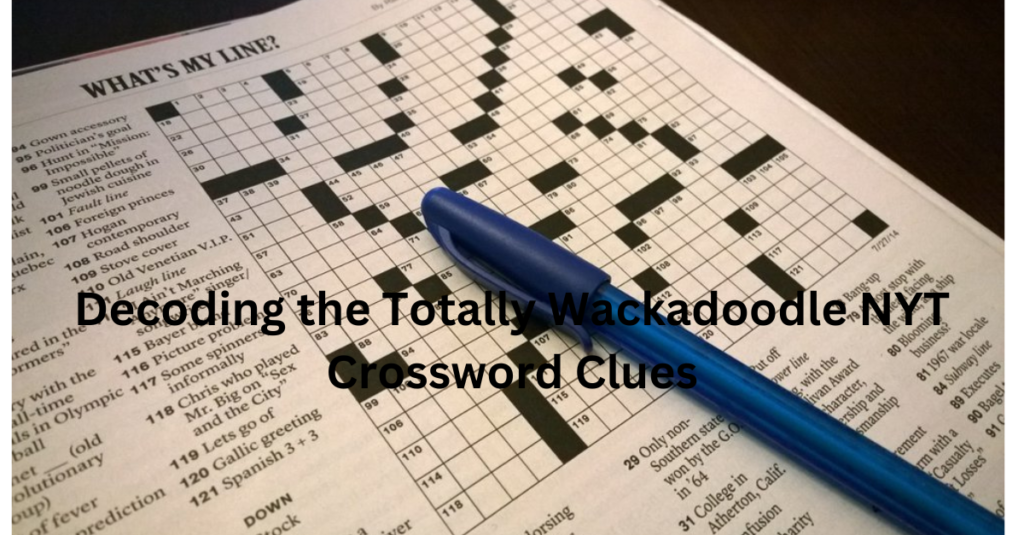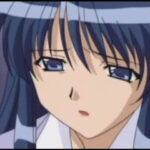The New York Times Crossword is a group favorite, fascinating puzzle fans since its debut in 1942. Known for its tough and clever clues, the NYT Crossword has become a daily ritual for hundreds of thousands of people. Some of these clues stand out for their downright wacky nature – people who make solvers giggle, scratch their heads, or marvel at the designer’s ingenuity. In this article, we’ll take a closer look at the weirdest and most memorable clues to grace the Totally Wackadoodle NYT, celebrating the whimsy and creativity that make this puzzle so popular.
The Art of Crossword Clues
Before delving into the craziest clues, it’s important to understand the artwork of crossword puzzles. A suitable clue for the crossword puzzle is the stability of the challenge and fairness, often using puns, puns and misdirection to stump solvers. High-quality leads are the ones that provide the “aha!” secondly, when the answer falls into place sooner or later. These moments of revelation are what keep solvers coming back for bigger things every day.
What Does the Wackadoodle Clue do?
A wackadoodle hint goes beyond just being clever or having a problem. It has an element of surprise, something that makes the solver think twice. It could be a strange pun, a hard-to-understand reference, or a witty twist that turns an ordinary phrase or word into something delightfully unusual. These clues often reflect the designer’s personality and creativity and add a unique flavour to the puzzle.
Memorable Footprints of Wackadoodle
Let’s explore a number of the most memorable wackadoodle clues that have appeared in the NYT Crossword, highlighting the creativity and humour that make these puzzles so much fun.
1. “This could make a different story” (6 letters)
Answer: SPINET
This guide is a master class in the wrong direction. At first glance, the solvers could consider a plot twist or a narrative exchange. But the answer is a musical device, the spinet, which, even if it is “turned” (rearranged), can grow into a “clumsy” phrase, telling a completely exclusive “story”. Each of these forms of puns is hard-hitting and pleasantly unexpected.
2. “E but not E, eg G.” (7 letters)
Answer: HOMOTEL
This clue plays on the idea of homophones – words that sound the same but have a unique meaning or spelling. Here, “E” and “e” are examples of homophones because they sound identical but are represented in a different way. The shape of the clue is maddening in its simplicity and complexity, and once the answer is revealed, it becomes a perfect blend of confusion and clarity.
3. “Slope Bunny?” (three letters)
Answer: EAR
This clue is a classic example of playful misdirection. Solvers might initially consider a gentle slope for novices. However, the answer is “ear” in terms of the slope of the bunny’s ear. This kind of lateral thinking is an indicator of wackadoodle clues, forcing solvers to rethink their assumptions.
4. “Where do I go for fill-in-the-blank solutions” (10 letters)
Answer: MADLIBS
This clue leads the solver to remember the places or contexts in which the blank spaces are usually filled. The “Mad Libs” solution is a playful and humorous take on the famous word game where individuals fill in the blanks with different parts of speech to create funny and nonsensical memories. The clue cleverly disguises the answer with its wording, making the reveal all the more satisfying.
5. “Can be flat or short” (four letters)
Answer: LIES
This clue illustrates the beauty of the double meaning. “Flat” and “quick” can describe lies – flat lies (untruths) and quick lies (quick deceptions). The strange nature of this clue lies in its ability to lead the solver down several paths of interpretation before the true answer emerges.
6. “A modest concept?” (four letters)
Answer: KNEE
This clue is a playful twist on Jonathan Swift’s famous satirical essay “A Modest Proposal.” Here “conception” refers back to the act of giving marriage, often completed on bended knee. The appeal of the clue lies in its literary reference mixed with modern, everyday action.
The Role of Constructors
Behind each Totally Wackadoodle NYT clue is a skilled designer who brings creativity and humor to the puzzle. Designers such as Merl Reagle, Patrick Berry and Liz Gorski are recognized for their imaginative and playful designs. They push the boundaries of what a crossword clue can be, infusing their puzzles with personality and wit.
Merl Reagle: The Master of Puns
Merl Reagle, the legendary crossword constructor, has turned into a household name for his love of puns and puns. His puzzles often featured wackadoodle clues that excited and challenged the solver. For example, one of his puzzles featured the clue “Superman’s favorite drink?” (6 letters) had the answer “PUNSCH”, a play on “punch”, reflecting Reagle’s signature style of witty and inventive wordplay.
Patrick Berry: The Elegant Innovator
Patrick Berry is widely known for his elegantly constructed puzzles and clever hints. His wackadoodle tracks regularly mix sophistication with whimsy. An example of Berry’s fashion is the clue “Four? (5 letters) with the solution “QUADS”, which refers to the set of quads. Berry’s clues often require solvers to guess outside the box, adding an extra layer of fun to the solving experience.
Liz Gorski: Queen of Themes
Liz Gorski is known for her themed puzzles and innovative solutions. Her wackadoodle clues regularly tie in with the overarching puzzle theme to create a cohesive and fun experience. In one of all her puzzles, the clue is “What are Jesus’ helpers researching in college?” (6 letters) had the answer “ELVISH”, a pun on the language elves speak in “Lord of the Rings” and a term for Santa’s Elf matters.
Impact Wackadoodle Clues
The Totally Wackadoodle NYT clues play a vital role in maintaining the purity and flavor of the NYT crossword puzzle. Mission solvers think creatively and include the surprising. These clues also add a layer of fun and humor to the fixing process, making the puzzle a pleasant blight on the usual mundane existence.
Community Building
The shared experience of fixing wackadoodle clues allows for a sense of networking among crossword fans. Online message boards, social networking companies, and puzzle golf equipment are often buzzing with discussions approximately particularly tricky or fun clues. Solvers share their shared triumphs and frustrations to create a colorful and supportive network
Encouraging New Solvers
Totally Wackadoodle NYT clues can also attract new solvers to the world of crosswords. The allure of solving a clever and funny clue can draw people in, sparking a lifelong love of puzzles. The sense of accomplishment that comes from cracking a particularly tricky clue can be incredibly satisfying, encouraging new solvers to continue honing their skills.
Conclusion
The New York Times Crossword is more than just a puzzle; it’s a celebration of language, creativity, and the joy of problem-solving. The Totally Wackadoodle NYT clues that pop up from time to time add a unique flavor to the solving experience, challenging solvers to think outside the box and embrace the unexpected. Whether it’s a pun, a piece of wordplay, or a clever misdirection, these clues reflect the ingenuity and humor of the constructors behind the puzzles.
Read More: Hamro Solar LLC



